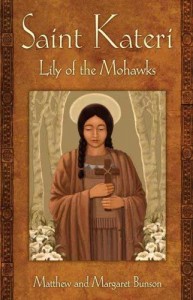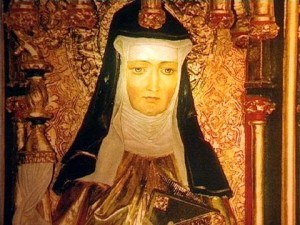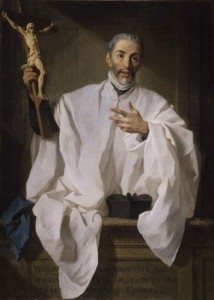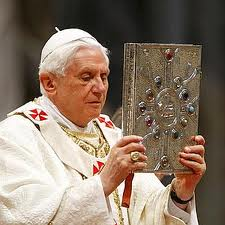Dr. Matthew Bunson discusses the life, times and work of  St. Athanasius of Alexandria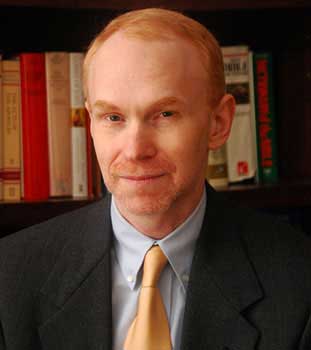
[powerpress]
For more on St. Athanasius of Alexandria and his teachings
AthanasiusÂ
-Â On the Incarnation of the Word
-Â Deposition of Arius
-Â Statement of Faith
-Â On Luke 10:22 (Matthew 11:27)
-Â Circular Letter
-Â Apologia Contra Arianos
-Â De Decretis
-Â De Sententia Dionysii
-Â Vita S. Antoni (Life of St. Anthony)
-Â Ad Episcopus Aegypti et Libyae
-Â Apologia ad Constantium
-Â Apologia de Fuga
-Â Historia Arianorum
-Â Four Discourses Against the Arians
-Â De Synodis
-Â Tomus ad Antiochenos
-Â Ad Afros Epistola Synodica
-Â Historia Acephala
-Â Letters
Athanasius was undoubtedly one of the most important and revered early Church Fathers. But this great Saint was above all the impassioned theologian of the Incarnation of the Logos, the Word of God who – as the Prologue of the fourth Gospel says – “became flesh and dwelt among us” (Jn 1: 14).
For this very reason Athanasius was also the most important and tenacious adversary of the Arian heresy, which at that time threatened faith in Christ, reduced to a creature “halfway” between God and man, according to a recurring tendency in history which we also see manifested today in various forms.
In all likelihood Athanasius was born in Alexandria, Egypt, in about the year 300 A.D. He received a good education before becoming a deacon and secretary to the Bishop of Alexandria, the great Egyptian metropolis. As a close collaborator of his Bishop, the young cleric took part with him in the Council of Nicaea, the first Ecumenical Council, convoked by the Emperor Constantine in May 325 A.D. to ensure Church unity. The Nicene Fathers were thus able to address various issues and primarily the serious problem that had arisen a few years earlier from the preaching of the Alexandrian priest, Arius.
With his theory, Arius threatened authentic faith in Christ, declaring that the Logos was not a true God but a created God, a creature “halfway” between God and man who hence remained for ever inaccessible to us. The Bishops gathered in Nicaea responded by developing and establishing the “Symbol of faith” [“Creed”] which, completed later at the First Council of Constantinople, has endured in the traditions of various Christian denominations and in the liturgy as the Niceno-Constantinopolitan Creed.
In this fundamental text – which expresses the faith of the undivided Church and which we also recite today, every Sunday, in the Eucharistic celebration – the Greek term homooúsiosis featured, in Latin consubstantialis: it means that the Son, the Logos, is “of the same substance” as the Father, he is God of God, he is his substance. Thus, the full divinity of the Son, which was denied by the Arians, was brought into the limelight.
For more visit Vatican.va
Dr. Matthew Bunson, Senior Fellow of the St. Paul Center for Biblical Theology, is one of the United States’ leading authorities on the papacy and the Church.
His books include: The Encyclopedia of Catholic History; The Encyclopedia of Saints; Papal Wisdom; All Shall Be Well; Encyclopedia of the Roman Empire; and The Angelic Doctor: The Life and World of St. Thomas Aquinas; The Pope Encyclopedia; We Have a Pope! Benedict XVI, the first Catholic biography of the Holy Father in the English language; the Encyclopedia of U.S. Catholic History; Pope Francis. Â His also the editor of OSV’s “The Catholic Answer” magazine.
Tags: Church, church fathers, faith, matthew bunson, work
This entry was posted on Friday, September 6th, 2013 at 11:15 am
You can follow any responses to this entry through the RSS 2.0 feed.
Dr. Matthew Bunson joins us to discuss the recent encyclical issued by Pope Francis, “Lumen Fidei” 
[powerpress]
ENCYCLICAL LETTER
LUMEN FIDEI
OF THE SUPREME PONTIFF
FRANCIS
TO THE BISHOPS PRIESTS AND DEACONS
CONSECRATED PERSONS
AND THE LAY FAITHFUL
ON FAITH1. The light of Faith: this is how the Church’s tradition speaks of the great gift brought by Jesus. In John’s Gospel, Christ says of himself: “I have come as light into the world, that whoever believes in me may not remain in darkness” (Jn 12:46). Saint Paul uses the same image: “God who said ‘Let light shine out of darkness,’ has shone in our hearts” (2 Cor 4:6). The pagan world, which hungered for light, had seen the growth of the cult of the sun god, Sol Invictus, invoked each day at sunrise. Yet though the sun was born anew each morning, it was clearly incapable of casting its light on all of human existence. The sun does not illumine all reality; its rays cannot penetrate to the shadow of death, the place where men’s eyes are closed to its light. “No one — Saint Justin Martyr writes — has ever been ready to die for his faith in the sun”.[1] Conscious of the immense horizon which their faith opened before them, Christians invoked Jesus as the true sun “whose rays bestow life”.[2] To Martha, weeping for the death of her brother Lazarus, Jesus said: “Did I not tell you that if you believed, you would see the glory of God?” (Jn 11:40). Those who believe, see; they see with a light that illumines their entire journey, for it comes from the risen Christ, the morning star which never sets.
Tags: death, FRANCIS, Jesus, matthew bunson
This entry was posted on Monday, July 29th, 2013 at 12:08 am
You can follow any responses to this entry through the RSS 2.0 feed.
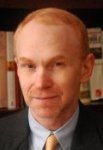 Dr Matthew Bunson co-wrote, with Margaret Bunson, a compelling biography of St. Damien. Â
Dr Matthew Bunson co-wrote, with Margaret Bunson, a compelling biography of St. Damien. Â
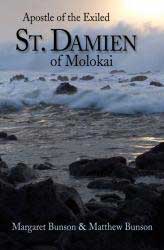 Dr. Bunson took time to share many more aspects of the life of this incredible saint.
Dr. Bunson took time to share many more aspects of the life of this incredible saint.
[powerpress]
St Jozef Damien De Veuster (1840-1889) – from vatican.va
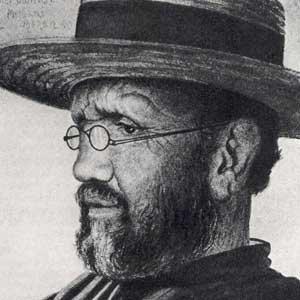 St Jozef Damien De Veuster, ss.cc, was born at Tremelo, Belgium, on 3 January 1840 (see also p. 8). Jozef (“Jef”) began his novitiate with the Congregation of the Sacred Hearts of Jesus and Mary (“Picpus Fathers”) at the beginning of 1859 and took the name Damien. He would pray every day before a picture of St Francis
St Jozef Damien De Veuster, ss.cc, was born at Tremelo, Belgium, on 3 January 1840 (see also p. 8). Jozef (“Jef”) began his novitiate with the Congregation of the Sacred Hearts of Jesus and Mary (“Picpus Fathers”) at the beginning of 1859 and took the name Damien. He would pray every day before a picture of St Francis
Xavier, patron of missionaries, to be sent on a mission. In 1863 his brother, who was to leave for a mission in the Hawaiian Islands, fell ill. Since preparations for the voyage had already been made, Damien obtained permission from the Superior General to take his brother’s place. He landed in Honolulu on 19 March 1864. He was ordained to the priesthood on the following 21 May.
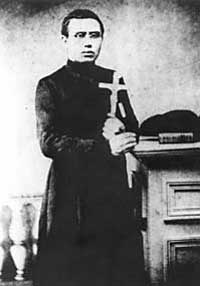 At that time, the Hawaiian Government decided on the harsh measure of quarantine aimed at preventing the spread of leprosy: the deportation to the neighbouring Island of Molokai of all those infected by what was then thought to be an incurable disease. The entire mission was concerned about the abandoned lepers and Bishop Louis Maigret, a Picpus father, felt sure they needed priests. He did not want to send anyone “in the name of obedience” because he was aware such an assignment was a potential death sentence. Of the four brothers who volunteered, Damien was the first to leave on 10 May 1873 for Kalaupapa.
At that time, the Hawaiian Government decided on the harsh measure of quarantine aimed at preventing the spread of leprosy: the deportation to the neighbouring Island of Molokai of all those infected by what was then thought to be an incurable disease. The entire mission was concerned about the abandoned lepers and Bishop Louis Maigret, a Picpus father, felt sure they needed priests. He did not want to send anyone “in the name of obedience” because he was aware such an assignment was a potential death sentence. Of the four brothers who volunteered, Damien was the first to leave on 10 May 1873 for Kalaupapa.
At his own request and that of the lepers, he remained on Molokai. Having contracted leprosy himself, he died on 15 April 1889, at the age of 49, after serving 16 years among the lepers. He was buried in the local cemetery under the same Pandanus tree where he had first slept upon his arrival in Molokai. His remains were exhumed in 1936 at the request of the Belgian Government and translated to a crypt of the Church of the Congregation of the Sacred Hearts at Louvain. Damien is universally known for having freely shared the life of the lepers in quarantine on the Kalaupapa Peninsula of Molokai. His departure for the “cursed isle”, the announcement of his illness (leprosy) in 1884 and his subsequent death deeply impressed his contemporaries of all denominations.
Damien was above all a Catholic missionary. Fr Damien is known today as a hero of charity because he identified so closely with 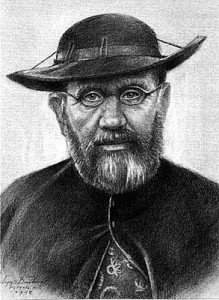 thevictims of leprosy.
thevictims of leprosy.
He respected the religious convictions of others; he accepted them as people and received with joy their collaboration and their help. With a heart wide open to the most abject and wretched, he showed no difference in his approach and in his care of the lepers. In his parish ministry or in his works of charity he found a place for everyone.
He continues to inspire thousands of believers and non-believers who wish to imitate him and to discover the source of his heroism. People of all creeds and all philosophical systems recognized in him the Servant of God which he always revealed himself to be, and respect his passion for the salvation of souls.
Pope John Paul II beatified Damien de Veuster in Brussels on 4 June 1995.
Tags: apostle, damien de veuster, Dr Matthew Bunson, lepers, Margaret Bunson, matthew bunson
This entry was posted on Friday, May 10th, 2013 at 5:37 am
You can follow any responses to this entry through the RSS 2.0 feed.
Yet another very special conversation with good friend and Discerning Hearts contributor, Dr. Matthew Bunson about his new book “Pope Francis”. Â He once again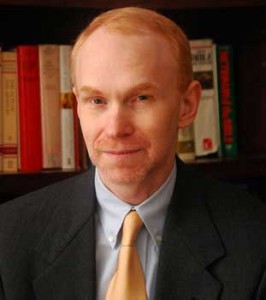 demonstrates why he is one of our leading Church historians! No one articulates a moment with more grace and vision, than Dr. Bunson. More than just a “biography” of Cardinal Jorge Mario Bergoglio of Argentina (which is offered beautifully in this volume), he places, in context, the extraordinary events and emotions leading to the election of the 265th successor of St. Peter…Pope Francis. The who, what, where, why and how are offered in vivid compelling detail. From the moment of Pope Benedict XVI’s earth shaking resignation and its implications, to the Holy Spirit led deliberations of the Cardinals, Dr. Bunson masterfully sets the stage for the first presentation to the world of Pope Francis on the loggia of St. Peter’s. We get the first in-depth look at the life and times of this “son of St. Ignatius”, the challenges, controversies, triumphs of his life thus far, and what we might expect given Bergoglio’s response to his election as the “bishop of Rome”. Matthew Bunson is a joy to read…don’t miss this definitive account of this truly remarkable story.
demonstrates why he is one of our leading Church historians! No one articulates a moment with more grace and vision, than Dr. Bunson. More than just a “biography” of Cardinal Jorge Mario Bergoglio of Argentina (which is offered beautifully in this volume), he places, in context, the extraordinary events and emotions leading to the election of the 265th successor of St. Peter…Pope Francis. The who, what, where, why and how are offered in vivid compelling detail. From the moment of Pope Benedict XVI’s earth shaking resignation and its implications, to the Holy Spirit led deliberations of the Cardinals, Dr. Bunson masterfully sets the stage for the first presentation to the world of Pope Francis on the loggia of St. Peter’s. We get the first in-depth look at the life and times of this “son of St. Ignatius”, the challenges, controversies, triumphs of his life thus far, and what we might expect given Bergoglio’s response to his election as the “bishop of Rome”. Matthew Bunson is a joy to read…don’t miss this definitive account of this truly remarkable story.
[powerpress]
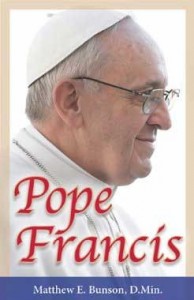 You can find the book here
You can find the book here
From the book description:
Get inside access to the entire history-making event, from the startling resignation of Pope Benedict through the gathering of Cardinals for the Conclave and the installation of this Pope of the people.
Examine Pope Francis the man – his background, his ideas, his mission, and his challenges and opportunities as our new pope – including 16 pages of full color photos from Pope Francis’ past and present.
“I want to ask you to walk together, and take care of one another …We need to see the light of hope and to be men and women who bring hope to others.” Pope Francis
Tags: bishop, holy spirit, matthew bunson, Pope Francis
This entry was posted on Wednesday, April 17th, 2013 at 10:28 am
You can follow any responses to this entry through the RSS 2.0 feed.
Once again we are joined by the fantastic Dr. Matthew Bunson!  We discuss his new work which brings us the life of  “St. Kateri: Lily of the Mohawks”.  The humble daughter of a Mohawk chief and a Roman Catholic mother, Kateri (named after St. Catherine of Siena) Tekakwitha lived a short life (she died at the age of 24). But she was such a powerful witness, so much so, that even the famed “black robe” Jesuit missionaries were awed  “by her perfection of the virtues, her mystical prayer life, and her total love for Christ.”  Her last words were: “Jesus, I love you.”  No one tells a story like Dr. Bunson, and he doesn’t fail to captivate this time when describing  the life of this remarkably holy woman.
“St. Kateri: Lily of the Mohawks”.  The humble daughter of a Mohawk chief and a Roman Catholic mother, Kateri (named after St. Catherine of Siena) Tekakwitha lived a short life (she died at the age of 24). But she was such a powerful witness, so much so, that even the famed “black robe” Jesuit missionaries were awed  “by her perfection of the virtues, her mystical prayer life, and her total love for Christ.”  Her last words were: “Jesus, I love you.”  No one tells a story like Dr. Bunson, and he doesn’t fail to captivate this time when describing  the life of this remarkably holy woman.
[powerpress]
You can find the book here
“Written by experienced and prolific authors Matthew and Margaret Bunson, St. Kateri: Lily of the Mohawks is the most definitive biography of Kateri Tekakwitha.”
Here is St. Kateri and Dr. Matthew Bunson featured on “Rome Reports”
Tags: osv, our sunday visitor
This entry was posted on Tuesday, November 13th, 2012 at 3:34 pm
You can follow any responses to this entry through the RSS 2.0 feed.
On October 7, at the beginning of the Synod on the New Evangelization,  Pope Benedict XVI will declare St. Hildegard von Bingen and St. John of Avila  Doctors of the Church.  On this special edition of Inside the Pages I talk with Dr. Matthew Bunson about the significance of this declaration.  We talk about the lives and work of both saints and how their teachings can touch our lives today.
Pope Benedict XVI will declare St. Hildegard von Bingen and St. John of Avila  Doctors of the Church.  On this special edition of Inside the Pages I talk with Dr. Matthew Bunson about the significance of this declaration.  We talk about the lives and work of both saints and how their teachings can touch our lives today.
[powerpress]
Tags: catholic, catholic podcast, catholic prayer, cathollc spirituality, Church, matthew bunson, saints, work
This entry was posted on Sunday, October 14th, 2012 at 12:06 am
You can follow any responses to this entry through the RSS 2.0 feed.
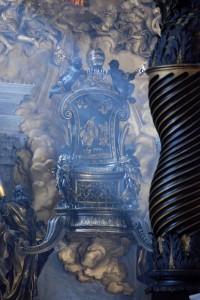 The Feast of the Chair of St. Peter is not so much a feast celebrating a “chair”, but more a feast celebrating what the chair symbolizes…the gift of the Papacy. I remember seeing it for the first time…not only the stunning piece used to preserve it by Bernini…but the whole altar piece setting at St. Peter’s…breathtaking. Almost every time I now see the presider’s chair at my local parish or the chair at our cathedral, I think of this chair, but also of the great unity it gives us with the entire Catholic Church under the leadership of the successor of St. Peter…our Holy Father. God bless the Holy Father, Pope Benedict XVI. Praise be to God for the gift of the Pa
The Feast of the Chair of St. Peter is not so much a feast celebrating a “chair”, but more a feast celebrating what the chair symbolizes…the gift of the Papacy. I remember seeing it for the first time…not only the stunning piece used to preserve it by Bernini…but the whole altar piece setting at St. Peter’s…breathtaking. Almost every time I now see the presider’s chair at my local parish or the chair at our cathedral, I think of this chair, but also of the great unity it gives us with the entire Catholic Church under the leadership of the successor of St. Peter…our Holy Father. God bless the Holy Father, Pope Benedict XVI. Praise be to God for the gift of the Pa pacy!
pacy!
Take a listen to Dr. Matthew Bunson talk to us about the importance of this feast in the podcast above.
Also here is the text from the Holy Father’s reflections on this feast from 2006Â from Vatican.va
“On this rock I will build my Church’
Dear Brothers and Sisters,
Today, the Latin-rite liturgy celebrates the Feast of the Chair of St Peter. This is a very ancient tradition, proven to have existed in Rome since the fourth century. On it we give thanks to God for the mission he entrusted to the Apostle Peter and his Successors.
“Cathedra” literally means the established seat of the Bishop, placed in the mother church of a diocese which for this reason is known as a “cathedral”; it is the symbol of the Bishop’s authority and in particular, of his “magisterium”, that is, the evangelical teaching which, as a successor of the Apostles, he is called to safeguard and to transmit to the Christian Community.
When a Bishop takes possession of the particular Church that has been entrusted to him, wearing his mitre and holding the pastoral staff, he sits on the cathedra. From this seat, as teacher and pastor, he will guide the journey of the faithful in faith, hope and charity.
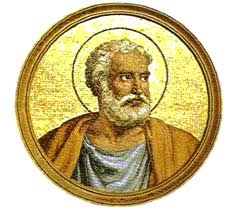 So what was the “Chair” of St Peter? Chosen by Christ as the “rock” on which to build the Church (cf. Mt 16:Â 18), he began his ministry in Jerusalem, after the Ascension of the Lord and Pentecost. The Church’s first “seat” was the Upper Room, and it is likely that a special place was reserved for Simon Peter in that room where Mary, Mother of Jesus, also prayed with the disciples. Therefore, we have the journey from Jerusalem, the newly born Church, to Antioch, the first centre of the Church formed from pagans and also still united with the Church that came from the Jews. Then Peter went to Rome, the centre of the Empire, the symbol of the “Orbis” – the “Urbs”, which expresses “Orbis”, the earth, where he ended his race at the service of the Gospel with martyrdom.
So what was the “Chair” of St Peter? Chosen by Christ as the “rock” on which to build the Church (cf. Mt 16:Â 18), he began his ministry in Jerusalem, after the Ascension of the Lord and Pentecost. The Church’s first “seat” was the Upper Room, and it is likely that a special place was reserved for Simon Peter in that room where Mary, Mother of Jesus, also prayed with the disciples. Therefore, we have the journey from Jerusalem, the newly born Church, to Antioch, the first centre of the Church formed from pagans and also still united with the Church that came from the Jews. Then Peter went to Rome, the centre of the Empire, the symbol of the “Orbis” – the “Urbs”, which expresses “Orbis”, the earth, where he ended his race at the service of the Gospel with martyrdom.
…This is testified by the most ancient Fathers of the Church, such as, for example, St Irenaeus, Bishop of Lyons, but who came from Asia Minor, who in his treatise Adversus Haereses, describes the Church of Rome as the “greatest and most ancient, known by all… founded and established in Rome by the two most glorious Apostles, Peter and Paul”; and he added:Â “The universal Church, that is, the faithful everywhere, must be in agreement with this Church because of her outstanding superiority” (III, 3, 2-3)….
Tertullian, a little later, said for his part:Â “How blessed is the Church of Rome, on which the Apostles poured forth all their doctrine along with their blood!” (De Praescriptione Hereticorum, 36).
Consequently, the Chair of the Bishop of Rome represents not only his service to the Roman community but also his mission as guide of the entire People of God.
Celebrating the “Chair” of Peter, therefore, as we are doing today, means attributing a strong spiritual significance to it and recognizing it as a privileged sign of the love of God, the eternal Good Shepherd, who wanted to gather his whole Church and lead her on the path of salvation.
Among the numerous testimonies of the Fathers, I would like to quote St Jerome’s. It is an extract from one of his letters, addressed to the Bishop of Rome. It is especially interesting precisely because it makes an explicit reference to the “Chair” of Peter, presenting it as a safe harbour of truth and peace.
This is what Jerome wrote:Â “I decided to consult the Chair of Peter, where that faith is found exalted by the lips of an Apostle; I now come to ask for nourishment for my soul there, where once I received the garment of Christ. I follow no leader save Christ, so I enter into communion with your beatitude, that is, with the Chair of Peter, for this I know is the rock upon which the Church is built” (cf. Le lettere I, 15, 1-2).
Dear brothers and sisters, in the apse of St Peter’s Basilica, as you know, is the monument to the Chair of the Apostle, a mature work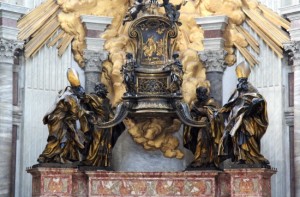 of Bernini. It is in the form of a great bronze throne supported by the statues of four Doctors of the Church: two from the West, St Augustine and St Ambrose, and two from the East:Â St John Chrysostom and St Athanasius.
of Bernini. It is in the form of a great bronze throne supported by the statues of four Doctors of the Church: two from the West, St Augustine and St Ambrose, and two from the East:Â St John Chrysostom and St Athanasius.
I invite you to pause before this evocative work which today can be admired, decorated with myriads of candles, and to say a special prayer for the ministry that God has entrusted to me. Raise your eyes to the alabaster glass window located directly above the Chair and call upon the Holy Spirit, so that with his enlightenment and power, he will always sustain my daily service to the entire Church. For this, as for your devoted attention, I thank you from my heart. –Vatican.va
Tags: bernini, catholic, catholic podcast, catholic prayer, cathollc spirituality, papacy, pope benedict xvi, st peter
This entry was posted on Tuesday, February 22nd, 2011 at 7:26 am
You can follow any responses to this entry through the RSS 2.0 feed.
Part 2 – A very special edition of “Inside the Pages†as we explore Pope Ben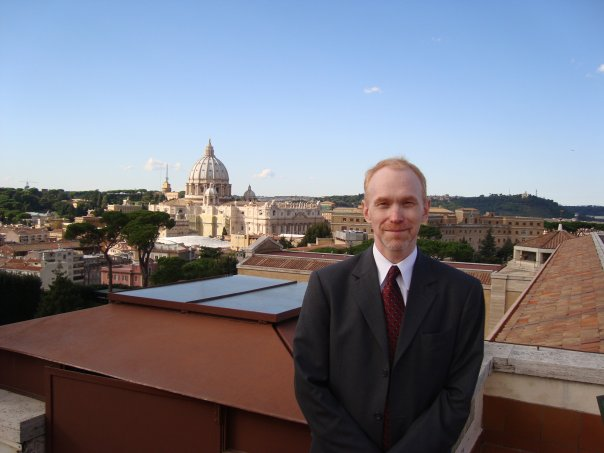 edict’s Apostolic Exhortation, “Verbum Domini†(The Word of the Lord), with Dr. Matthew Bunson. A magnificent gift for the Church, Dr. Bunson breaks open in part 2 of our discussion the liturgy, homelitics and the significance of the document. We encourage you to check out the document yourself by clicking on the links below.
edict’s Apostolic Exhortation, “Verbum Domini†(The Word of the Lord), with Dr. Matthew Bunson. A magnificent gift for the Church, Dr. Bunson breaks open in part 2 of our discussion the liturgy, homelitics and the significance of the document. We encourage you to check out the document yourself by clicking on the links below.
We encourage you to visit the Vatican website so you can read, ponder, and download “Verbum Domini”
[powerpress]
Tags: Apostolic Exhortation, catholic, catholic podcast, catholic prayer, cathollc spirituality, matthew bunson, pope benedict, the liturgy, verbum domini, word of the lord
This entry was posted on Friday, November 19th, 2010 at 7:48 am
You can follow any responses to this entry through the RSS 2.0 feed.
A very special edition of “Inside the Pages” as we explore Pope Ben edict’s Apostolic Exhortation, “Verbum Domini” (The Word of the Lord), with Dr. Matthew Bunson. A magnificent gift for the Church, Dr. Bunson breaks open in part 1 of our discussion the significance of the document and how it was comprised. We encourage you to check out the document yourself by clicking on the links below.
edict’s Apostolic Exhortation, “Verbum Domini” (The Word of the Lord), with Dr. Matthew Bunson. A magnificent gift for the Church, Dr. Bunson breaks open in part 1 of our discussion the significance of the document and how it was comprised. We encourage you to check out the document yourself by clicking on the links below.
[powerpress]
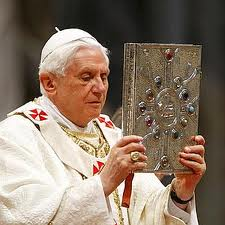 POST-SYNODAL
POST-SYNODALAPOSTOLIC EXHORTATION
VERBUM DOMINI
OF THE HOLY FATHER
BENEDICT XVI
TO THE BISHOPS, CLERGY,
CONSECRATED PERSONS
AND THE LAY FAITHFUL
ON THE WORD OF GOD
IN THE LIFE AND MISSION
OF THE CHURCH
That our joy may be complete [2]
From “Dei Verbum†to the Synod on the Word of God [3]
The Synod of Bishops on the Word of God [4]
The Prologue of John’s Gospel as a guide [5]
God in dialogue [6]
The analogy of the word of God [7]
The cosmic dimension of the word [8]
The creation of man [9]
The realism of the word [10]
Christology of the word [11-13]
The eschatological dimension of the word of God [14]
The word of God and the Holy Spirit [15-16]
Tradition and Scripture [17-18]
Sacred Scripture, inspiration and truth [19]
God the Father, source and origin of the word [20-21]
Our Response To The God Who Speaks
Called to the covenant with God [22]
God hears us and responds to our questions [23]
In dialogue with God through his words [24]
The word of God and faith [25]
Sin as a refusal to hear the word of God [26]
Mary, “Mother of God’s Word†and “Mother of Faith†[27-28]
The Interpretation Of Sacred Scripture In The Church
The Church as the primary setting for biblical hermeneutics [29-30]
“The soul of sacred theology†[31]
The development of biblical studies and the Church’s magisterium [32-33]
The Council’s biblical hermeneutic: a directive to be appropriated [34]
The danger of dualism and a secularized hermeneutic [35]
Faith and reason in the approach to Scripture [36]
Literal sense and spiritual sense [37]
The need to transcend the “letter†[38]
The Bible’s intrinsic unity [39]
The relationship between the Old and the New Testaments [40-41]
The “dark†passages of the Bible [42]
Christians, Jews and the sacred Scriptures [43]
The fundamentalist interpretation of sacred Scripture [44]
Dialogue between pastors, theologians and exegetes [45]
The Bible and ecumenism [46]
Consequences for the study of theology [47]
The saints and the interpretation of Scripture [48-49]
The Word Of God And The Church
The Church receives the word [50]
Christ’s constant presence in the life of the Church [51]
The Liturgy, Privileged Setting For The Word Of God
The word of God in the sacred liturgy [52]
Sacred Scripture and the sacraments [53]
The word of God and the Eucharist [54-55]
The sacramentality of the word [56]
Sacred Scripture and the Lectionary [57]
Proclamation of the word and the ministry of Reader [58]
The importance of the homily [59]
The fittingness of a Directory on Homiletics [60]
The word of God, Reconciliation and the Anointing of the Sick [61]
The word of God and the Liturgy of the Hours [62]
The word of God and the Book of Blessings [63]
Suggestions and practical proposals for promoting fuller participation in the liturgy [64]a) Celebrations of the word of God [65]
b) The word and silence [66]
c) The solemn proclamation of the word of God [67]
d) The word of God in Christian Churches [68]
e) The exclusive use of biblical texts in the liturgy [69]
f) Biblically-inspired liturgical song [70]
g) Particular concern for the visually and hearing impaired [71]
The Word Of God In The Life Of The Church
Encountering the word of God in sacred Scripture [72]
Letting the Bible inspire pastoral activity [73]
The biblical dimension of catechesis [74]
The biblical formation of Christians [75]
Sacred Scripture in large ecclesial gatherings [76]
The word of God and vocations [77]a) Ordained ministers and the word of God [78-81]
b) The word of God and candidates for Holy Orders [82]
c) The word of God and the consecrated life [83]
d) The word of God and the lay faithful [84]
e) The word of God, marriage and the family [85]The prayerful reading of sacred Scripture and “lectio divina†[86-87]
The word of God and Marian prayer [88]
The word of God and the Holy Land [89]
The Church’s Mission: To Proclaim The Word Of God To The World
The Word from the Father and to the Father [90]
Proclaiming to the world the “Logos†of hope [91]
The word of God is the source of the Church’s mission [92]
The word and the Kingdom of God [93]
All the baptized are responsible for this proclamation [94]
The necessity of the “missio ad gentes†[95]
Proclamation and the new evangelization [96]
The word of God and Christian witness [97-98]
The Word Of God And Commitment In The World
Serving Jesus in “the least of his brethren†(Mt 25:40) [99]
The word of God and commitment to justice in society [100-101]
The proclamation of God’s word, reconciliation and peace between peoples [102]
The word of God and practical charity [103]
The proclamation of the word of God and young people [104]
The proclamation of the word of God and migrants [105]
The proclamation of the word of God and the suffering [106]
The proclamation of the word of God and the poor [107]
The proclamation of the word of God and the protection of creation [108]
The value of culture for the life of humanity [109]
The Bible, a great code for cultures [110]
Knowledge of the Bible in schools and universities [111]
Sacred Scripture in the variety of artistic expressions [112]
The word of God and the means of social communication [113]
The Bible and inculturation [114]
Translating the Bible and making it more widely available [115]
God’s word transcends cultural limits [116]
The Word Of God And Interreligious Dialogue
The value of interreligious dialogue [117]
Dialogue between Christians and Muslims [118]
Dialogue with other religions [119]
Dialogue and religious freedom [120]
God’s definitive word [121]
New evangelization and a new hearing [122]
The word and joy [123]
“Mater Verbi et Mater laetitiae†[124]
Tags: catholic, catholic podcast, catholic prayer, cathollc spirituality, sacred scripture
This entry was posted on Monday, November 15th, 2010 at 7:56 am
You can follow any responses to this entry through the RSS 2.0 feed.

